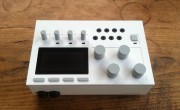By Jason Epstein
We all know what Billboard charts are, but did you know that they’re an ever-evolving entity, always adapting to the persistently shifting landscape of music consumption? We spoke to Billboard Editorial Director, Bill Werde about his hand in the Billboard chart’s recent recalibration, ways to define “success” in the music world and the future he envisions for Billboard charts.
SoundCtrl- Harlem Shake became #1 on the Billboard charts thanks to the recalibration that took place to take YouTube views into account. Can you tell me how this came about and what goes into recalibrating something of that scope?
Bill Werde- The Billboard charts are always evolving – never more rapidly though than in recent years – as this dynamic, digital wave of platforms and distribution methods for music has rolled in. We’d wanted to add YouTube data to our charts for quite some time, but we couldn’t do it until both YouTube and Billboard felt the data was ready for prime time in terms of integrity and dependability. The second we crossed that threshold, we added the data. It turned out to be a perfect storm, because the week we did, “Harlem Shake” broke. That song did more streams than any previous song, [as measured] by magnitudes. It made “Gangnam Style” look trifling by comparison, and we all know what a massive global smash that was.
As far as the recalibration itself, it’s weeks of trying different formulas once we can begin to process a new data stream behind the scenes, to make sure the weighting ultimately delivers a chart that is reflective of what Silvio Pietroluongo, our charts director and I feel is happening in the market place.
SC- In the long run, what’s more beneficial for an artist in both the short and long term: to rank highly on the Billboard Hot 100, or the Billboard 200?
BW- This presumes there’s only one way for an artist to create a meaningful trajectory in 2013. What’s great about music these days is that there are dozens of ways for an artist to create a fan base and momentum. It used to be the only way to be a star was to get your song on radio and then sell lots of albums. These days, you have artists like Pitbull who may not sell a ton of albums, but instead sell so many singles they can make just as much money as big album artists. And of course, Pitbull cleans up on the road – fans want to hear all those hits. Or perhaps more to the point, you have Psy, who clearly had a massive, undeniable, global smash hit with Gangnam Style before radio ever really started to play it. I think you’ll see a lot more of that in the coming years.
So I don’t think it’s really a question of what chart is best for an artist – it really depends on what sort of artist you are, and what your goals are. I think what never changes though, is that the artists who stick around will be the ones that find meaningful and honest ways to connect with their fans. You have to stand for something, mean something to people. You have to be a real artist to transcend the Billboard charts entirely – to be bigger than any one song or album. That’s when you really win.
SC - What can you see in the future of Billboard.com and music charts ingeneral? Is there another recalibration on the horizon to take streaming music or another form of audio consumption into account?
BW- There will always, always, always be another recalibration on the horizon. We’ve been charting music for more than six decades. We were the chart of record when vinyl 45s were what mattered. We were the chart of record when 8 tracks were hot. You get where I’m heading with this – CDs, digital downloads, streams, it doesn’t really matter to us; Billboard charts what’s happening in the marketplace for music. If in 10 years people listen to music by having it beamed into their heads, I’m sure we’ll have the Billboard Cranium 100 chart.
In a more specific way, we’re doing a lot of work behind the scenes right now on acquiring and processing data at faster speeds so we can create a whole suite of products. I can’t say too much about it yet, but I’ll say this: once upon a time, Billboard charts were basically just ascii text: non-interactive lists of songs and artists. Today you can export our charts from Billboard.com and use them as playlists in Spotify and Rdio. We use our charts as jumping off points for people to discover news, videos and more about those artists and songs. My expectation is that in the very near future, the Billboard charts will be living, breathing, time-and-space shifting representations of what people are listening to in particular places, on particular platforms and so on.




![[Interview] With Their Stunning Crystallized Volcano, Krewella Hopes to Blow Fans’ Minds](https://www.soundctrl.com/blog/wp-content/uploads/2013/09/Identity_Set-180x110.jpg)
![[Interview] Eric Davich, Co-Founder & CCO of Songza](https://www.soundctrl.com/blog/wp-content/uploads/2013/09/3017099-poster-songza-180x110.png)

![[Interview] With Their Stunning Crystallized Volcano, Krewella Hopes to Blow Fans’ Minds](https://www.soundctrl.com/blog/wp-content/uploads/2013/09/Identity_Set-50x50.jpg)








Comments are closed.